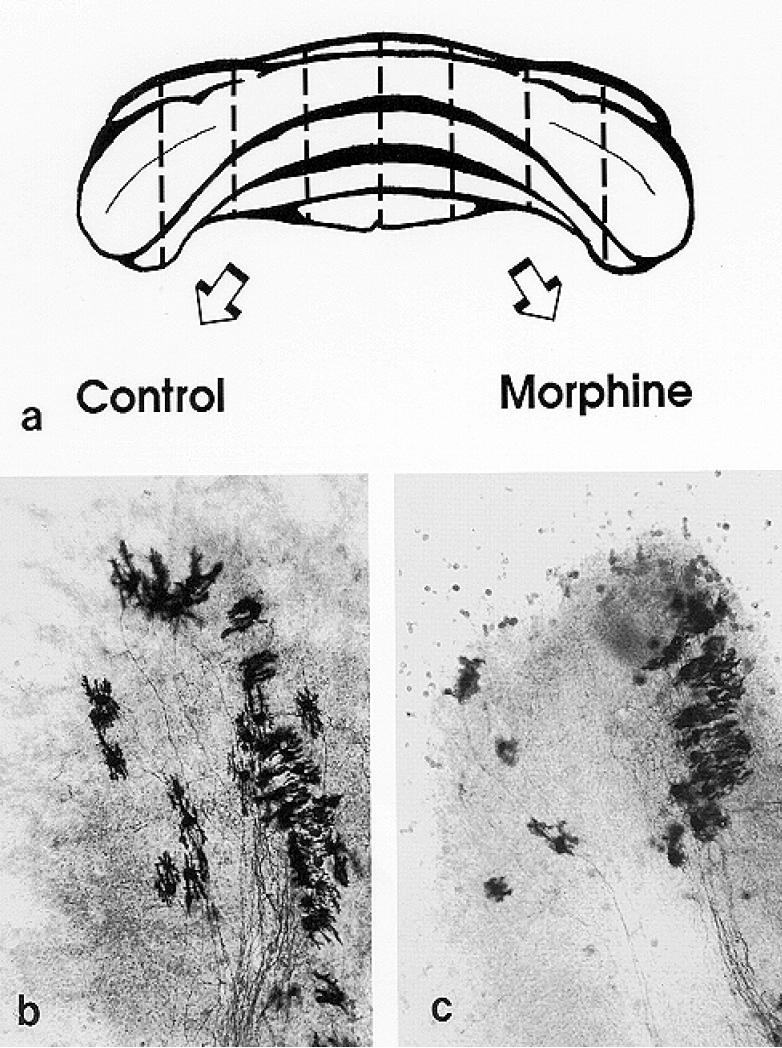FIG. 2.
Bilaterally-matched explant pairs were grown in the presence and absence of morphine. (a). Schematic drawing of the cerebellum from a 1-day-old mouse illustrating the “homologous- or mirror-pair” paradigm (63,64) used to assess the experimental effects of opiates. Tissue dissection was guided by existing anatomical divisions within the cerebellum. Cerebella from 1-day-old mice were divided into rostral and caudal portions at the primary fissure, and further divided into parasagittally-oriented explant cultures using additional cerebellar landmarks. Cerebella from 7-day-old mice are larger and are subdivided using different anatomical landmarks for dissection (see text). (b & c). Bilaterally-matched explant pairs have similar size, shape, and cytoarchitecture which is maintained in organotypic culture. For example, Purkinje cells in the untreated control explants (b) had larger dendrites compared to their matched-pair counterparts that were treated with 10-6 M morphine (c) at 7 to 10 days in vitro. (b & c) 220 ×.

